Spotlight: Ian Walters
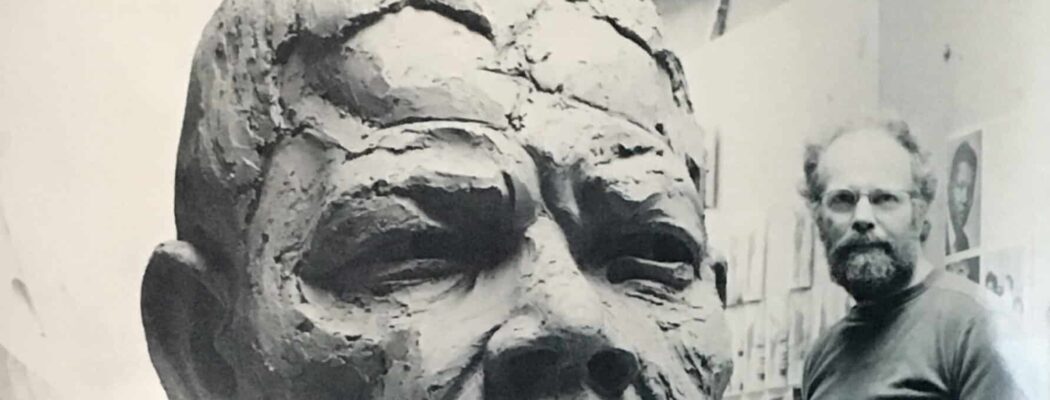
We celebrate the work of internationally renowned sculptor Ian Walters (1930–2006), who worked from his studio on Battersea High Street for three decades, creating public sculptures that promoted peace and equality.
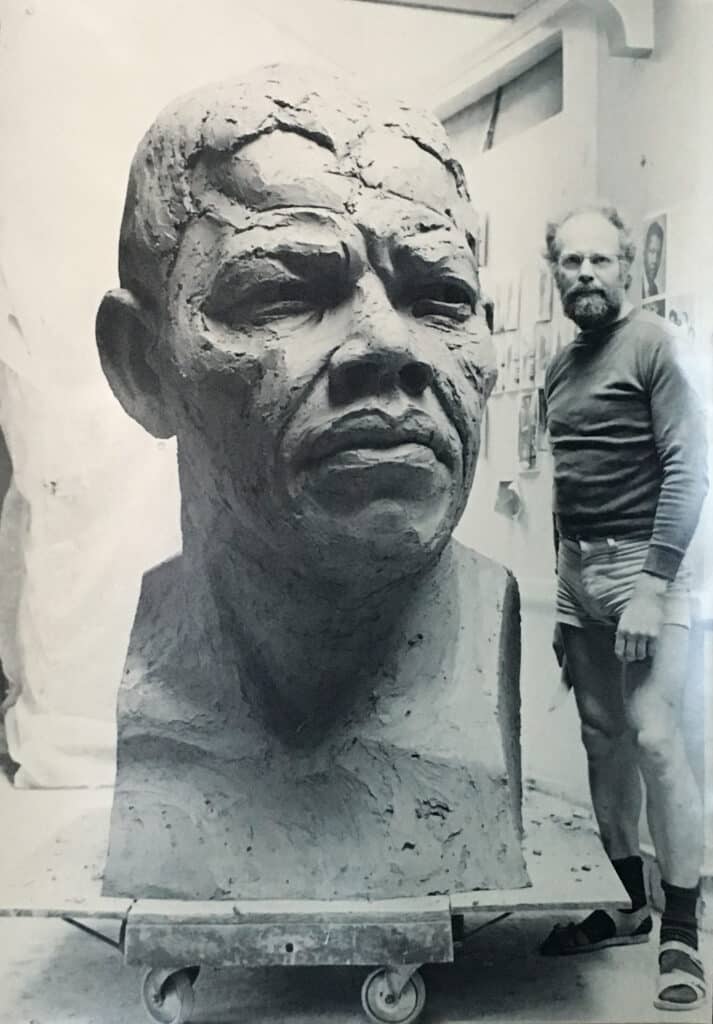
Born in Solihull, Ian Walters was driven by a sculptor’s sensibility from a tender age. His fascination with clay, which began when he came across some in the rubble of a WW2 bomb site, coupled with a preoccupation with the tools he found in the garage his father owned, was probably an early sign of the artistic life he would make for himself.
In 1946 he went to Birmingham School of Art to train in classical sculpture. Following an initial enthusiasm for woodcarving, Walters turned to modelling. His key influences then included his teacher, the sculptor William Bloye, Charles Sargeant Jagger, to whom Bloye owed much, Jacob Epstein, and the figurative works of Ossip Zadkine. Walters went on to teach sculpture himself at Stourbridge College of Art and Guildford School of Art for a number of years.
Around 1967-68 Walters and his family moved from Longhedge Street SW11 to 134 Battersea High Street, where he set up his studio and lived and worked for the rest of his life. His children are Jess and Jake Walters, a successful photographer who we thank for providing the images published here.

Ian Walters’ statue of Harold Wilson in St George’s Square, Huddersfield (1999) 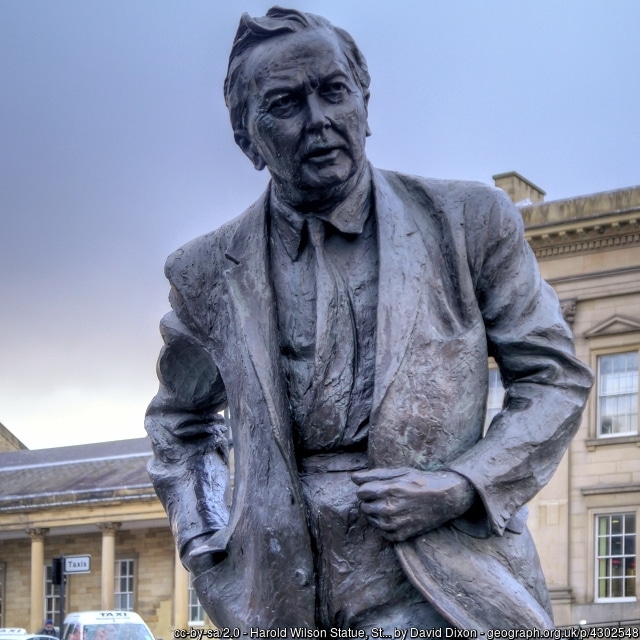
In 1981 Ian Walters decided to leave his post at Guildford to devote his energy and artistic talent to humanitarian causes and political activism. He passionately believed that public sculpture must reflect political concerns, and he devoted his practice to producing memorials of influential political and humanitarian figures to further their campaigns for equality and justice.
His political activity extended back to the 1945 general election when, as a 15 year old, he participated in the school mock election. He received a copy of Herbert Read’s Art and Society (1937) as a school art prize. In the early 1960s he travelled to Yugoslavia to participate in one of Tito’s public sculpture programmes, but it was the 1968 wave of student protests that inspired him to integrate his political and artistic values into one practice.
Walters rejected the fashionable abstract art that excited the intellectual set of the day, and instead set his sights on developing a powerful style of figurative sculpture that could resonate with a much broader public. He worked mainly in a realistic manner, always with his hands, moulding in clay rather than carving in stone. Several of his portraits have a Baroque quality: the vigorous painterly modelling style and the twisted poses.

Barbara Anne Castle, Baroness Castle of Blackburn 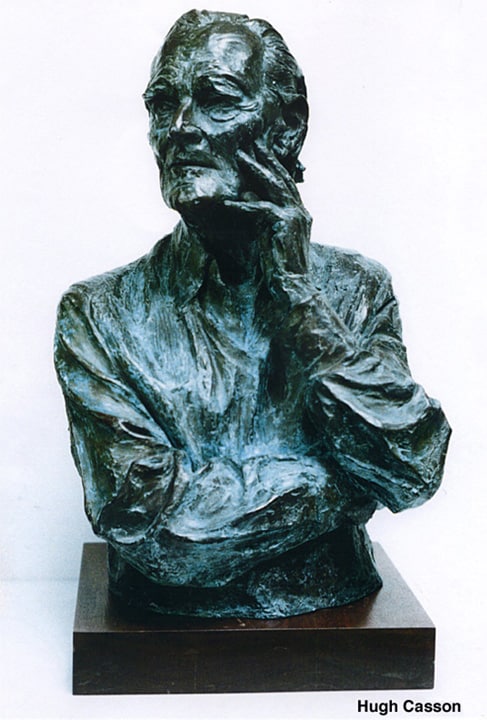
Walters’ bust of Hugh Casson
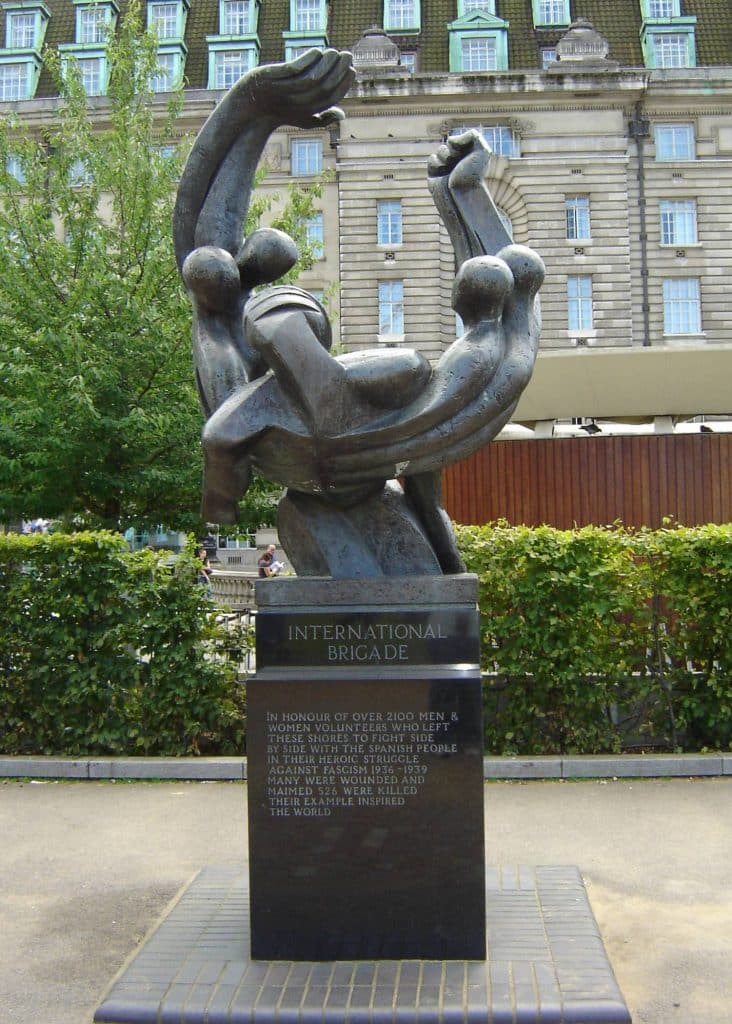
Walters made portraits of more than 30 individuals during his life, including Sylvia Pankhurst, Stephen Hawking, Harold Wilson, Baroness Barbara Castle of Blackburn, Oliver Tambo, Trevor Huddleston, Fenner Brockway, James Callaghan, Lord Baron Alf Dubs, former MP for Battersea and Wandsworth-born Lord Soper. Tony Benn, who sat for him, likened Walters’ Battersea studio to a museum in its own right: “[Being there] was like attending a series of seminars on the progressive movements of our times.”
His impressive abstract sculpture commemorating the International Brigade is sited at Jubilee Gardens, South Bank and his many bas reliefs include a plaque marking the 150th anniversary of the Tolpuddle Martyrs. His early works depicted torture by regimes in Portugal, Chile, Cyprus and Palestine, and figures from the Vietnam war. They were displayed all over the world, including Hiroshima.
Walters was passionately opposed to South Africa’s apartheid regime. In 1982, as a personal commemoration of the 70th anniversary of the African National Congress (ANC), he made a bust of Nelson Mandela (1918-2013), who was in his twentieth year of incarceration at the time. The colossal bust, which was modelled on photographs of Mandela and images illicitly taken by Mary Benson during his imprisonment on Robben Island, provides a striking reminder of Mandela’s courage in the face of injustice.
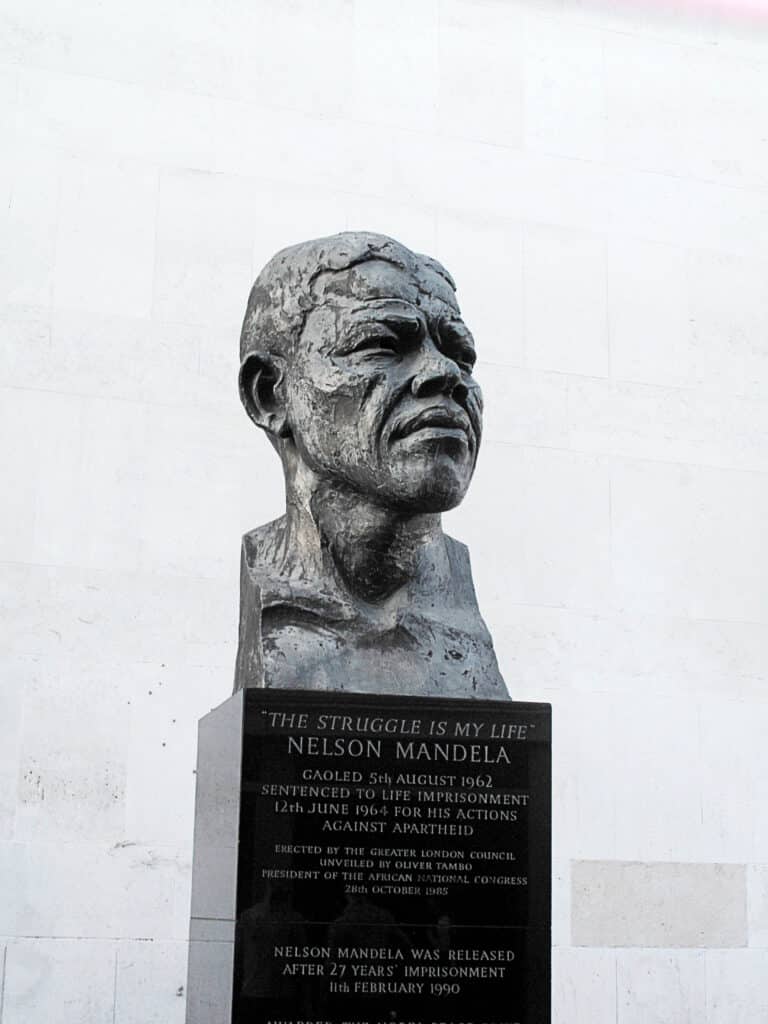
Walters offered the bust to the ANC so it could be used as a figurehead at public Free Nelson Mandela campaign rallies – hence the use of bronze resin, a lightweight, easily transportable medium. Following the announcement that 1984 would be the GLC’s Year of Anti-Racism, Walters offered the bust to the GLC for display in a public area. It was unveiled in October 1985 at the Royal Festival Hall by Oliver Tambo, President of the ANC and Mandela’s former business partner. After a series of politically-charged vandalist attacks on the sculpture in 1985-6, the South Bank Board commissioned a bronze replacement, which was installed permanently in 1988.
The bust caught the attention of the exiled South African journalist Donald Woods, who commissioned Walters to produce the bronze statue of Mandela that would become his magnum opus. Walters travelled to South Africa, where Mandela sat for him for nine hours. From that process Walters made a clay portrait, which was then taken back to his Battersea High Street studio and transformed into a 9ft work of art.
The sculpture was finished in clay and ready to be cast but sadly Walters passed away from cancer before he got to see his most famous work completed and in place. His daughter, Jess, has said “He spent the last few weeks of his life finishing the sculpture, and I’m very proud of him that he spent that time up a ladder doing the last finishing touches when he was dying.” (Business Live, 2007) After his death, his widow Yolande organised the final casting into bronze and the style of marble plinth, which is situated in Parliament Square with the House of Commons as a backdrop. It was unveiled on 29 August 2007 by Mr Mandela himself, then aged 89, who was joined by his wife Graca Machel, Mayor of London Ken Livingstone, anti-apartheid campaigners, gospel singers and dancers.
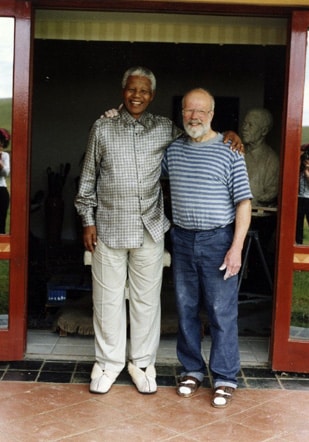
Walters with Mandela in South Africa, with the clay portrait in progress in the background 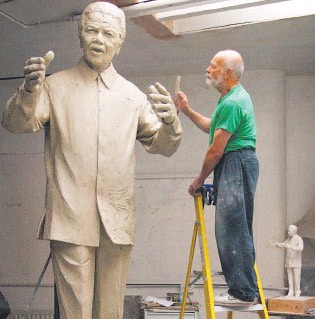
Walters putting the final touches to his 9-foot tall statue of Mandela
In the final year of Walters’ life, he was awarded the Jean Masson-Davidson Silver Medal in recognition of his lifetime achievements by the Society of Portrait Sculptors. He is remembered as a bold artist who never shied away from controversial issues and used art to make a difference in the world.
Watch Walters speaking in his studio in this extended trailer for the documentary on his work, ‘Lost Wax’:
Many thanks to Jake Walters for providing several images included in this post.

